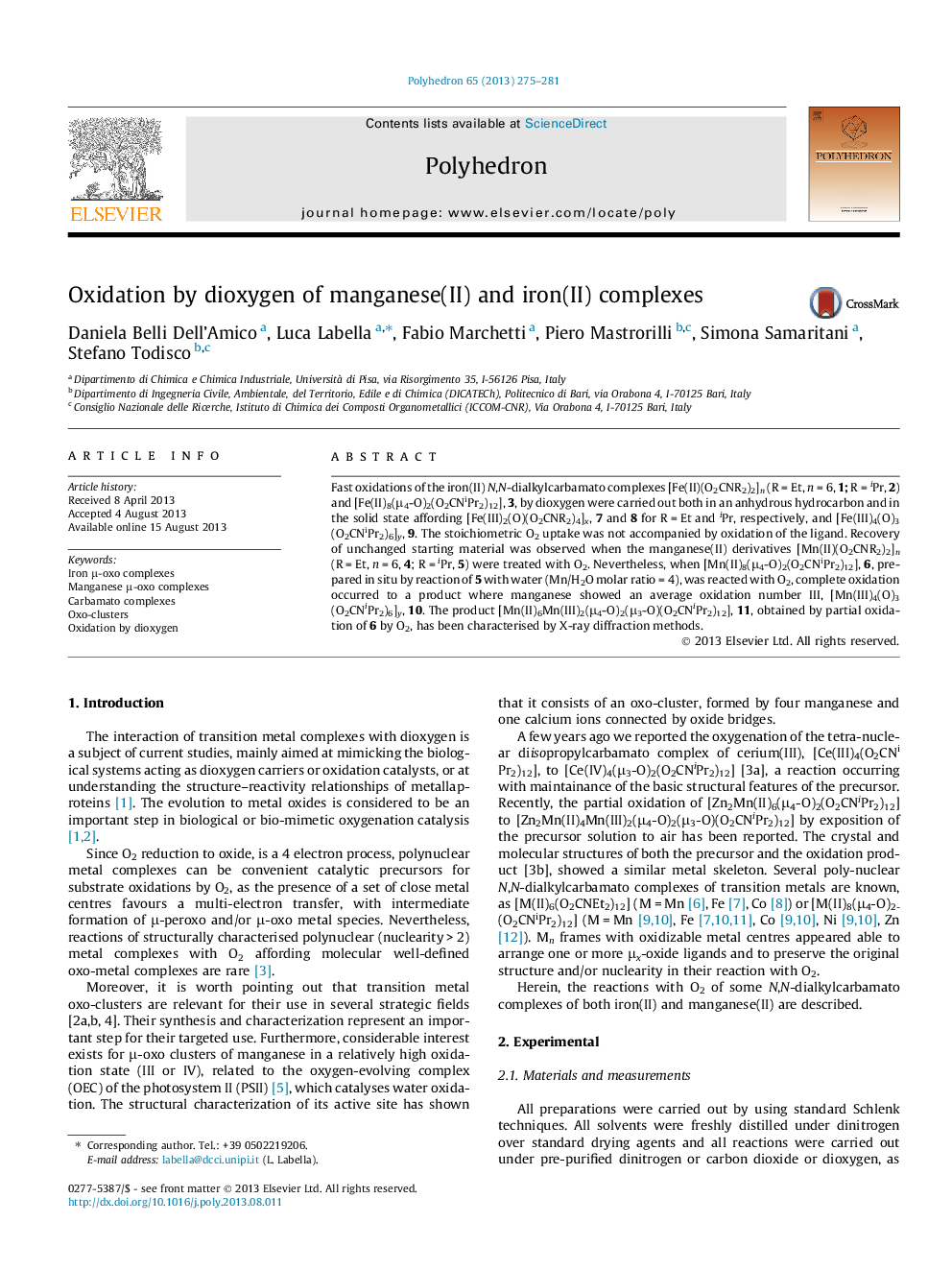| Article ID | Journal | Published Year | Pages | File Type |
|---|---|---|---|---|
| 1336797 | Polyhedron | 2013 | 7 Pages |
Fast oxidations of the iron(II) N,N-dialkylcarbamato complexes [Fe(II)(O2CNR2)2]n (R = Et, n = 6, 1; R = iPr, 2) and [Fe(II)8(μ4-O)2(O2CNiPr2)12], 3, by dioxygen were carried out both in an anhydrous hydrocarbon and in the solid state affording [Fe(III)2(O)(O2CNR2)4]x, 7 and 8 for R = Et and iPr, respectively, and [Fe(III)4(O)3(O2CNiPr2)6]y, 9. The stoichiometric O2 uptake was not accompanied by oxidation of the ligand. Recovery of unchanged starting material was observed when the manganese(II) derivatives [Mn(II)(O2CNR2)2]n (R = Et, n = 6, 4; R = iPr, 5) were treated with O2. Nevertheless, when [Mn(II)8(μ4-O)2(O2CNiPr2)12], 6, prepared in situ by reaction of 5 with water (Mn/H2O molar ratio = 4), was reacted with O2, complete oxidation occurred to a product where manganese showed an average oxidation number III, [Mn(III)4(O)3(O2CNiPr2)6]y, 10. The product [Mn(II)6Mn(III)2(μ4-O)2(μ3-O)(O2CNiPr2)12], 11, obtained by partial oxidation of 6 by O2, has been characterised by X-ray diffraction methods.
Graphical abstractThe iron(II) N,N-dialkylcarbamato complexes [Fe(II)(O2CNR2)2]n (R = Et, iPr) and Fe(II)8(μ4-O)2(O2CNiPr2)12 were oxidised by dioxygen to the corresponding iron(III) derivatives. On the other hand, the manganese(II) derivatives [Mn(II)(O2CNR2)2]n (R = Et, iPr) did not react with O2. Nevertheless, Mn(II)8(μ4-O)2(O2CNiPr2)12 was oxidised by O2 to [Mn(III)4(O)3(O2CNiPr2)6]y. The product of partial oxidation, [Mn(II)6Mn(III)2(μ4-O)2(μ3-O)(O2CNiPr2)12], has been characterised by X-ray diffraction methods.Figure optionsDownload full-size imageDownload as PowerPoint slide
